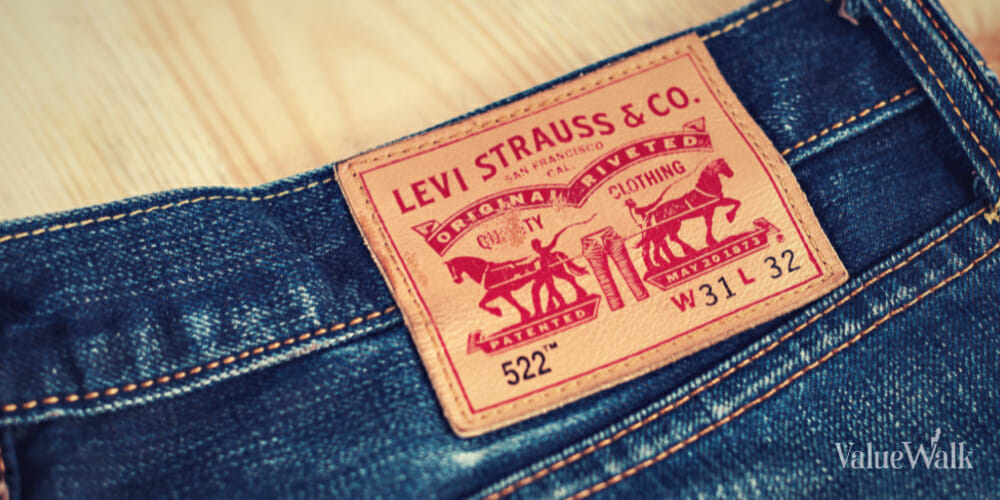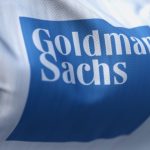Clothing manufacturer and retailer Levi Strauss (NYSE:LEVI) has been a hot stock as of late, rising some 12% this week and 28% year to date (YTD) to around $21 per share.
The maker of Levi’s jeans and other types of apparel released its first-quarter earnings results this week, and the results were better than expected. Looking ahead, the company sees its strong performance continuing, which boosted investor confidence. Let’s take a look at why Levi Strauss is up and if it’s a good buy.
Fueling growth
Levi Strauss is one of the first companies to post its first-quarter earnings results, but its quarter ended Feb. 25, a month earlier than the results we’ll start seeing next week for Q1. The latest quarter also includes the holiday month of December, so Levi Strauss may not be a bellwether for other retailers.
Nonetheless, investors should be pleased that the company beat earnings and revenue estimates in its first fiscal quarter. It might even have gotten a bit of a bounce from the exposure it’s getting from a new Beyonce song called “Levii’s Jeans,” but let’s stick to the numbers.
Levi Strauss’ revenue fell 8% year over year to $1.56 billion, but it came in higher than the $1.55 billion estimate. Two factors limited the company’s revenue. One was a shift in wholesale shipments from the second quarter to the first quarter of 2023, which made the year-over-year numbers in Q1 2024 look worse. The other was a revenue hit from the company’s decision to exit its lower-priced Denizen brand. Levi Strauss’ revenue would have been roughly flat otherwise.
Revenue through its wholesale business, which is selling through third parties, was down 19% year over year and would have still been down 9% without the Q1 2023 shift. However, direct-to-consumer (DTC) sales jumped 7% overall and 10% in the U.S. DTC now accounts for a record 48% of Levi’s revenue.
On the bottom line, the company had a net loss of $11 million, down from net income of $115 million a year ago. Adjusted net income was $103 million or 26 cents per share, down 24% year over year. However, this result beat the consensus estimate of 21 cents per share. Of note, Levi Strauss was able to reduce its cost of goods sold by 13% to $651 million, improving its gross margin by 240 basis points to 58.2%.
The growth in DTC sales and expense reductions are key components of a productivity initiative the company rolled out in January called Project FUEL. The multi-year strategy is designed to fuel DTC revenue and generate profitable growth by reducing costs, optimizing operations and redesigning processes.
Levi’s anticipates $100 million in cost savings from this plan in fiscal 2024, which includes a 10% to 15% workforce reduction in the first half of the year. However, the savings also added $116 million in restructuring expenses in the first quarter, which hurt the company’s bottom line.
An optimistic outlook
The productivity initiative has already started to bear fruit, and the company expects it to continue through fiscal 2024 and beyond. In addition to the cost savings, Levi Strauss reduced its inventory by 14% in the quarter.
For the second fiscal quarter, the company expects net revenue growth to be up in the high single digits, with adjusted EPS anticipated to be about 10 cents in Q2, up 150% year over year.
For the full fiscal year, Levi Strauss expects revenue to be up by 1% to 3% with gains in the mid-single digits in the second half of the year. Based on its productivity improvements, the company raised its adjusted earnings guidance for fiscal 2024 to between $1.17 and $1.27 per share, up from the previous projection of $1.15 to $1.25 per share. The adjusted EPS was $1.10 per share at the end of fiscal 2023, so it’s a 6% increase on the low end. On the high end, the guidance is better than analysts had predicted.
The company’s gross margin is also estimated to be up another 150 basis points at the end of the year from its 58.2% level now, management said on the Q1 earnings call.
Is it a buy?
Levi Strauss also improved its liquidity by increasing its cash to $517 million in Q1, compared to $399 million at the end of its Q4, and boosting its free cash flow to $214 million from a $271 million deficit the previous quarter.
The stock has a forward P/E ratio of 17, which is reasonable. Levi Strauss also received a slew of price-target upgrades after posting earnings and its updated outlook.
The company looks to be in pretty good shape, but after a 28% run-up already, I’m not sure how much higher it will go, given its solid-but-muted growth potential. It will all depend on how Levi Strauss continues to execute on its plan. It may be wise to keep an eye on it to see if it settles down a bit before considering it.
Disclaimer: All investments involve risk. In no way should this article be taken as investment advice or constitute responsibility for investment gains or losses. The information in this report should not be relied upon for investment decisions. All investors must conduct their own due diligence and consult their own investment advisors in making trading decisions.












